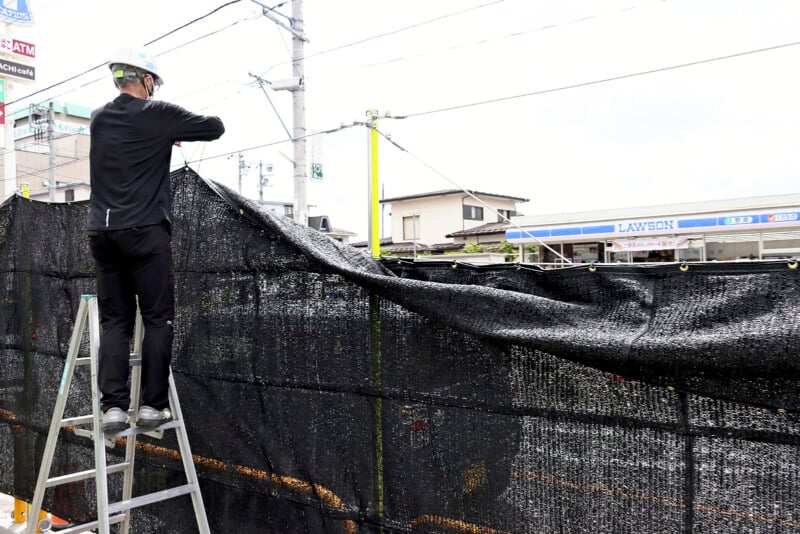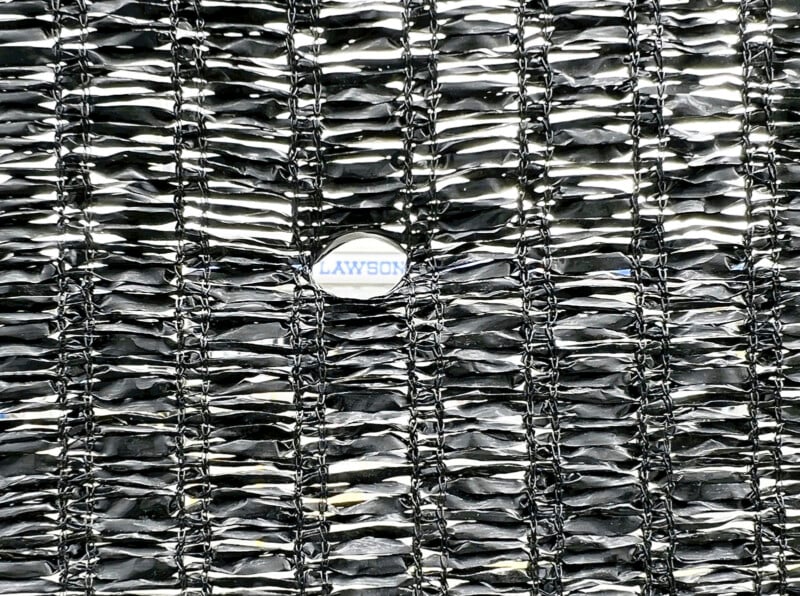Tourists Are Poking Holes in the Screen Erected to Block Photos of Mount Fuji
![]()
Tourists have been poking camera lens-sized holes in a black screen erected to obstruct a popular view of Mount Fuji in Japan.
The photo spot is right in front of a Lawson convenience store with Mount Fuji rising dramatically behind it. But the town of Fujikawaguchiko was fed up with unruly tourists and announced they would be making the barrier last month.
The town, located on the island of Honshu, wanted to prevent overcrowding by tourists who were also littering and ignoring traffic rules. A town official told Agence France-Press that the decision to install the barrier was “regrettable” but necessary because “some tourists can’t respect rules.”
But despite spending 1.3 million yen ($8,275) on the 66-foot-long screen, no sooner had it been installed than a hole was made. As of this morning, Japanese officials have found 10 holes, all at eye level, that are all exactly the right size to fit a camera lens.


“It’s about manners. It’s a shame,” a local official tells Agence France-Presse. However, he added that the holes aren’t quite big enough to completely banish the net from the shot.
“I tried to put a camera up to one of the holes,” he adds. “In fact, I think the net came into the frame.”
The holes appeared despite a security guard being there from 10:00 to 16:00. But tourists clearly vandalized the net when nobody was around.
![]()
![]()
The town officials add that “there have been some people who came to see the screen itself”. But he stands by the screen’s installation believing that the town is discouraging tourists from coming.
There is a QR code on the net that gives information about other tourist attractions in the area which also includes alternative views of Mount Fuji.
Overtourism is Seen as a Problem
Although many areas of the world are desperate for tourists, for others it has reached saturation and locals no longer want visitors.
Fujikawaguchiko may have taken notes from the Austrian town of Hallstatt, Austria which has also built a fence to stop tourists from taking selfies in front of the picturesque Salzkammergut Mountains which is believed to have inspired Disney’s Frozen.
In March, the city of Kyoto sought ways to prevent “paparazzi” tourists from taking photos of Geishas. Monthly visitors to the island nation eclipsed three million people in March for the first time on record.
And in Italy, Venice have started charging daily visitors to enter the city. Elsewhere in Europe, residents of the Canary Islands are demanding a freeze on visitors.
Image credits: AP